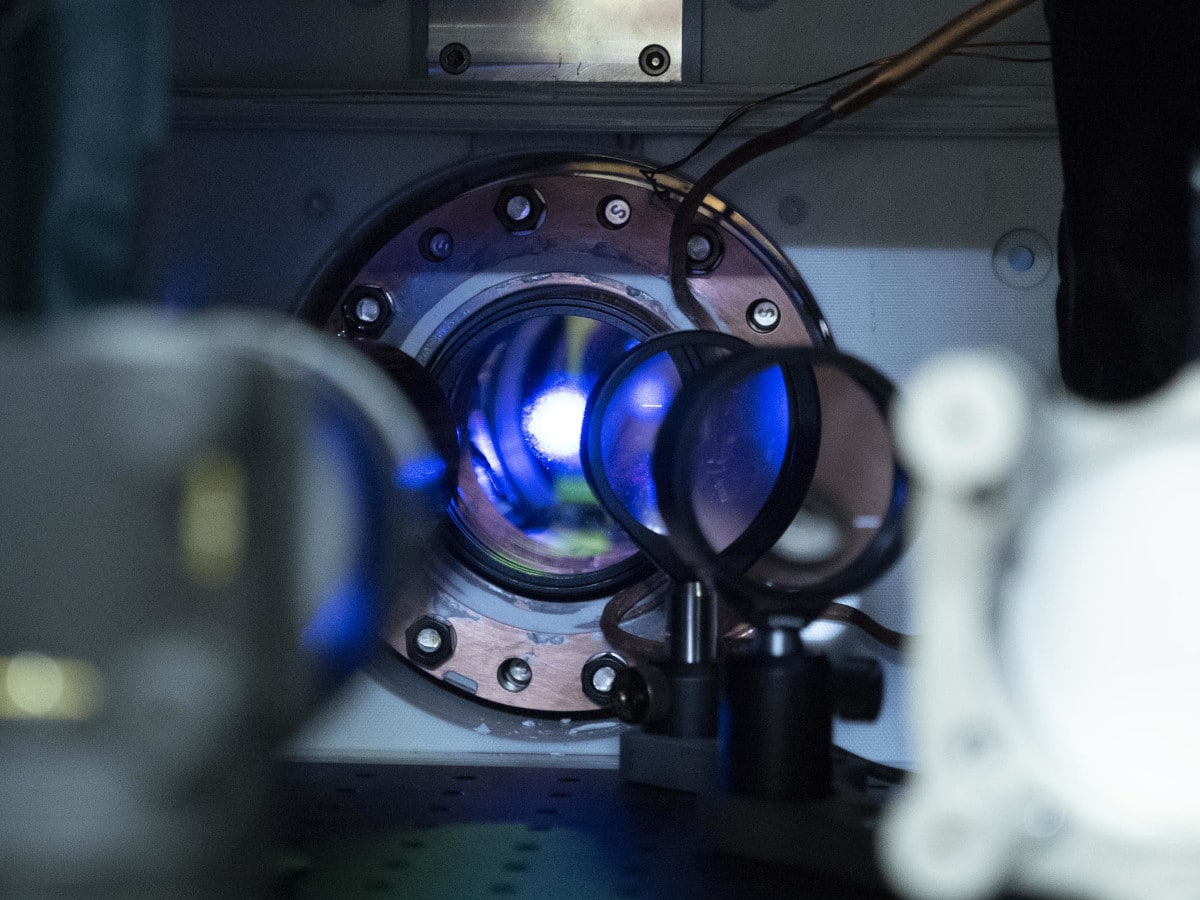

A clock close to the ground ticks slower than a clock higher. That effect has now been demonstrated for ‘clocks’ with less than a millimeter between them.
As crazy as it may sound, time doesn’t run the same for everyone and everyone. A clock aboard a superfast spaceship runs slower than a clock here on Earth, according to Albert Einstein’s theory of relativity. And also a clock that ‘feels’ more gravity, ticks slower.
Both effects were measured more than fifty years ago, by clocks on aircraft compare to clocks on the ground† But now researchers at the American Institute JILA gone a big step further. She sizes the effect that gravity has on time on atoms that were closer than a millimeter to each other.
Just the right tapping speed
The JILA researchers make use of an atomic clock. “Its heart is an extremely stable laser,” said Tobias Bothwell, one of the researchers. “Where a regular clock has a pendulum that swings back and forth, that laser has an electric field that ‘ticks’ about 100 trillion times per second.”
To ensure this laser’s beats per second are accurate, Bothwell and colleagues shine it at about 100,000 atoms of the element. strontium† They can absorb and re-emit laser light with exactly the desired frequency. “We then correct the frequency of the laser to match that of the strontium atoms exactly,” Bothwell says. “So if you and I both have strontium, we can each build an atomic clock and use that strontium to make our clocks have the exact same ticking speed.”
Disturbing influences
Now the frequencies of the strontium atoms are also not completely identical, due to all kinds of effects from the environment. “Our job is to eliminate as much as possible anything that could affect the tapping of the atoms, and to map what’s left,” says Bothwell.
If you manage to eliminate all those disturbing influences, you are left with one effect: the fact that the Earth’s gravity pulls harder on the strontium atoms ‘at the bottom’ than on the strontium atoms ‘at the top’. As a result, the lower atoms tick, according to the theory of relativity, just a little slower. “And we see that difference in our clock, even if the distance between strontium atoms is only a fifth millimeter,” says Bothwell.
Revolution
With their study, the Americans have shown that atomic clocks can still be a lot better than they already were. “Previously, the precision of atomic clocks had been demonstrated to 19 decimal places. We arrive at 21 figures,” says Bothwell.
A dot on the horizon now forms networks of atomic clocks with such precision. “If we manage to build it, it will revolutionize all kinds of fields, from navigation to surveying.”
Also interesting is what happens when the effect of gravity on time is shown on an even smaller scale – say, one hundredth of a millimeter. On that scale, the effects of another physical theory can already be felt: quantum mechanics. Who knows, maybe gravity will disrupt those quantum effects. If that is indeed the case, says research leader Jun Ye in a press releasethis could lead to an explanation for the fact that the world around us does not appear to exhibit quantum behaviour, while this is clearly the case in the world of the smallest.
Source material:
†Resolving the gravitational redshift across a millimetre-scale atomic sample” – Nature
†JILA atomic clocks measure Einstein’s general relativity at millimeter scale” – NIST
Tobias Bothwell
Image at the top of this article: Jacobson/NIST